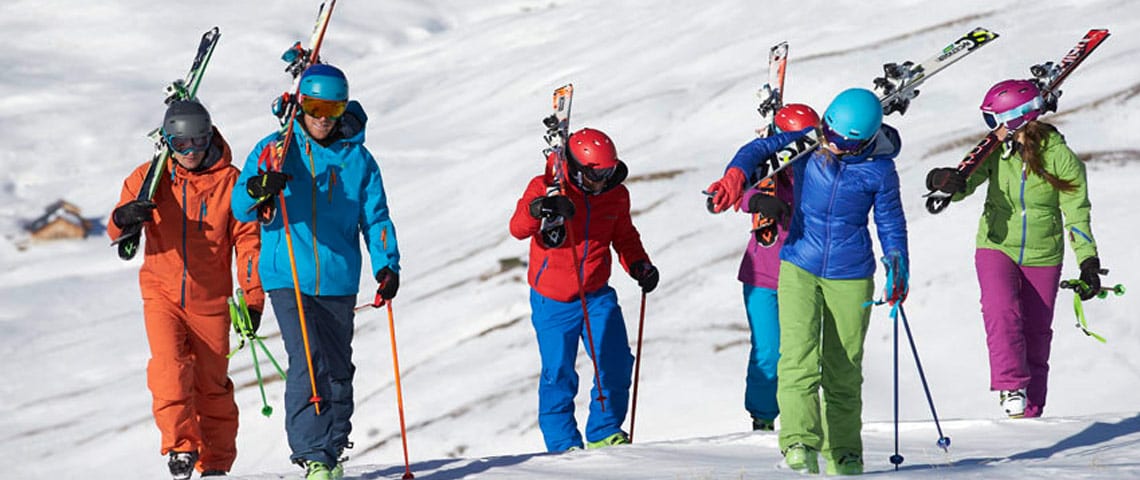
What Skis Should You Buy? The Ultimate 6-Step Ski Buying Guide
Getting your hands on your first pair of skis can be a minefield. You’re probably wondering things like, “What’s the ski type for me? Which ski shape suits the kind of snow I’ll be hitting? And what’s the deal with all these different brands?” Just like planning your first ski holiday, buying your first set of skis can seem like navigating a maze. But don’t worry, we’re here to break it down for you in an easy-to-follow guide. So, before you even think about snagging a pair of skis, read on for all you need to know…
Step 1. Define what type of skiing you’ll be doing?
The type of skis you buy will largely depend on the type of skiing you will be doing. And, the type of skiing you’ll be doing is likely to depend predominantly on your ability and also your personal preference.
If you’re a beginner skier, it’s recommended to learn how to ski comfortably on the pistes first and that you start on the beginner slopes. This will provide you with the simplest terrain to learn on and provide you with the core basics upon which you can build and later develop into other areas. However if you’re more of an advanced skier seeking thrills and adventure off-piste and freestyling you may choose as ski designed to enhanced performance.
Skis for each style vary, here’s a brief overview of the common characteristics of each of the different types:
Piste Skis
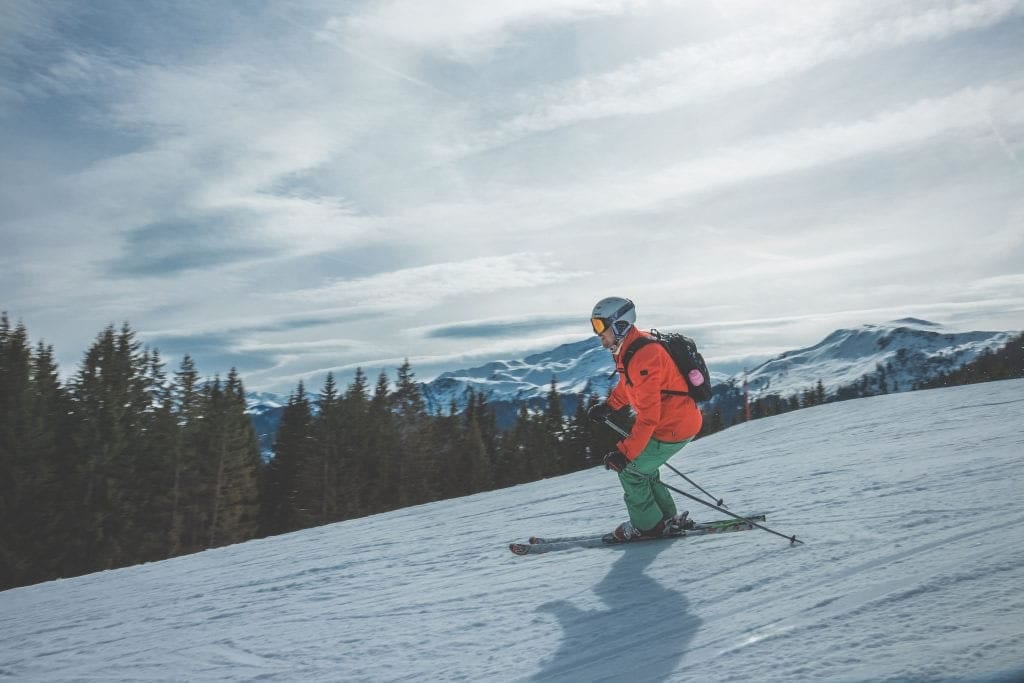
Piste skis are narrower and have a shorter radius than freeride skis. They are designed for groomed slopes. The narrower waist allows for quick edge changes, and the traditional camber provides energy and grip.
Freestyle
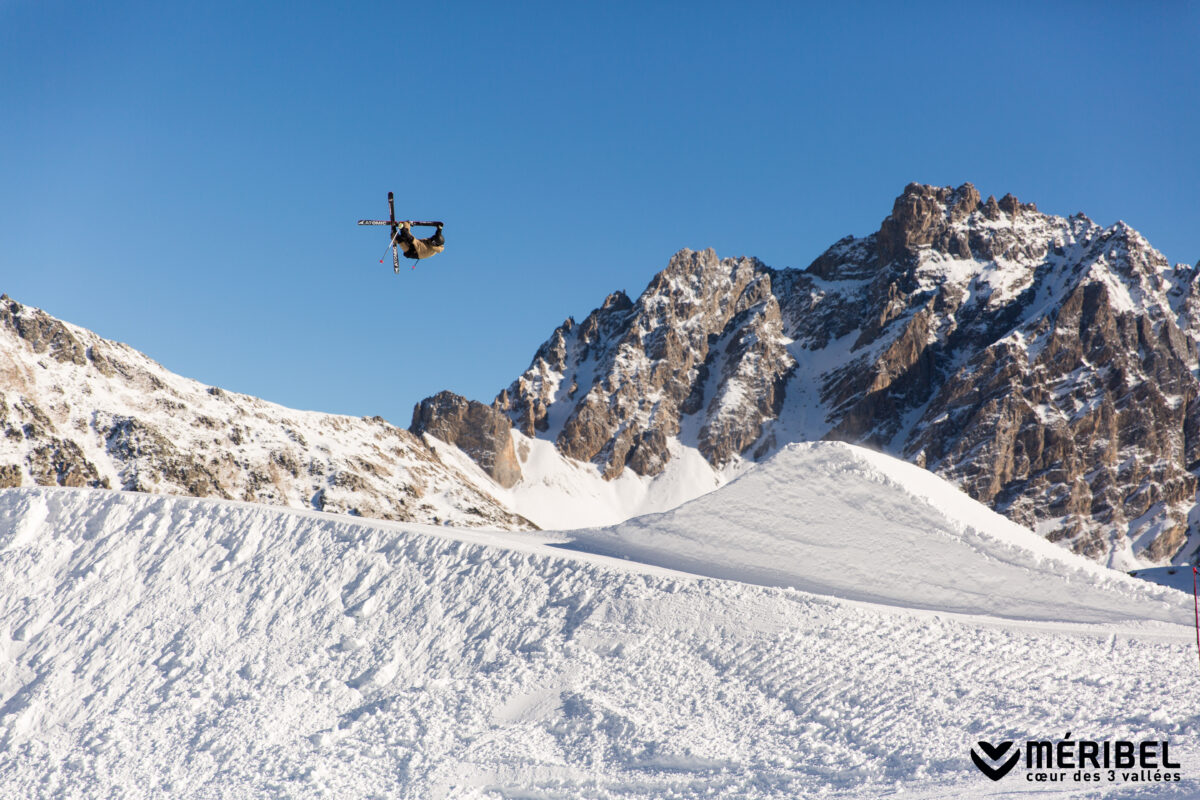
Freestyle skis are twin-tipped, have a waist width of 80-90mm, and are softer than similarly priced piste skis and are catered more for the advanced skier. The tips and tails are more forgiving, and the camber profiles can include a lot of rocker. Freestyle skis are all about freedom of expression and skiing in any environment.
Freeride
Freeride skis are wider and have a longer radius than piste skis. They are designed for powder, steeps, bowls, trees, and more advanced skiers. The wider waist ensures maximum floatation, while the reverse camber and interesting profiles and shapes dramatically improve handling in soft snow.
Alpine Touring
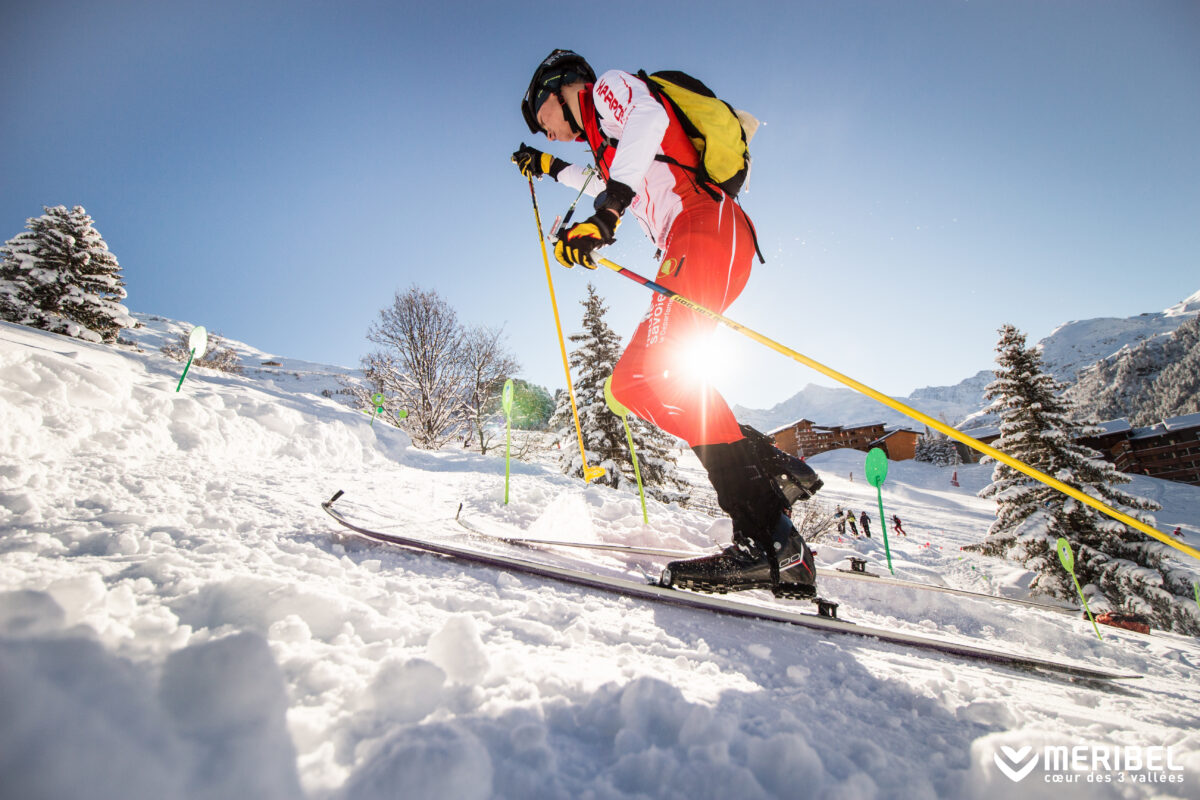
Alpine touring skis are lightweight and versatile, and they are capable of both ascending and descending. The width of the skis, particularly at the waist, should be chosen based on the type of terrain you plan to tackle. Wider skis offer better float in deep snow, while narrow waists are more efficient for climbing.
Backcountry Skis
When choosing your backcountry skis it’s important that you get the weight right as you’ll spend quite a lot of time ascending uphill so you don’t want them too heavy, you also want something that isn’t too wide or too long as these will be a pain to move around in.
Step 2. Choose Skis Based on Your Skiing Level
If you’re looking for an all mountain ski, the best option for you is again likely to depend most on your ski level and to what degree you’re looking to progress to the next level. For example, if you’re a novice looking to progress to an intermediate, it may make sense to challenge yourself slightly and invest in some intermediate level skis to ensure they suit your needs as you develop your skills.
Beginners
For beginners. on their first ski holiday, it’s recommended to invest in skis designed specifically for your skill level. Beginner skis are your best choice. These skis are crafted with forgiveness and ease of use in mind. They have soft tips and tails, which make turning more manageable. Additionally, they come with helpful sidecuts, which aid in initiating and completing turns. The camber profiles on beginner skis typically feature standard camber underfoot with minimal tip rocker. This combination of features ensures that the skis are stable, predictable, and forgiving.
If you’re feeling pretty confident that you’ll soon be progressing to more of a novice level skier but are still not quite there, it might be worth considering renting your skis initially. That way, you can save on buying beginner skis that you may soon have outgrown. For a full rundown of the Buying vs Renting your ski equipment, head over to our guide. And
Novice
If you’re comfortable skiing on green and blue runs and are looking to move on to more challenging terrain. Plus, have good technique on easier terrain and at slower speeds, but may be cautious when skiing on bumps, icy, or steeper runs, then you should look to buy some novice level skis. Novice skis are designed to be forgiving and easy to turn, with soft tips and tails, helpful sidecuts, and standard camber profiles with only small amounts of tip rocker.
Intermediate
If you’re confident skiing on red runs and can attempt easy black runs and some ungroomed snow. But, you’re still working on your technique and bumps and steep runs usually impact your flow so intermediate level skis are likely to be the best fit for you.
Intermediate skis are stiffer than novice skis to provide grip at faster speeds and have more targeted side cuts that are often deeper with a shorter radius on piste-oriented skis. Camber profiles use standard camber underfoot for good grip, and all-mountain category skis use tip rocker to aid control in softer snow.
Advanced
If you have all-round skills to tackle most of the mountain, with solid technique in nearly every condition and slope then advanced skis are going to be the ones for you.
Shapes and designs of advanced skis are more specific to end-users and have associated performance increases. Profiles vary radically, as do side cuts and radii. Advanced skis are stiffer than intermediate skis, with excellent stability and grip at speed, but they are also less forgiving.
Step 3. Short or Long Skis? Here’s How to Decide The Right Ski Length
When it comes to getting the right skis, you will need to know your ski level and height. Generally speaking for a beginner, you will want to have the tip of your skis the same height as your nose when they’re rested upright on the floor. Around 3cm either shorter or longer than this shouldn’t be a problem.
As outlined in the ski length chart below, if you’re a beginner, your skis should be shorter. This is because shorter skis are easier to control which is useful when you’re just starting out. As you progress in ability, you may want to opt for longer skis.
Another thing that will influence the length of your skis is your weight. If your weight is significantly either above or below the average weight for your height, then you will want to reflect this with your ski length. Those who are heavier should go for longer skis and those who are lighter should go for shorter and easier to control skis.
Ski Length Chart
Ski Length Guide for All Mountain Skis:
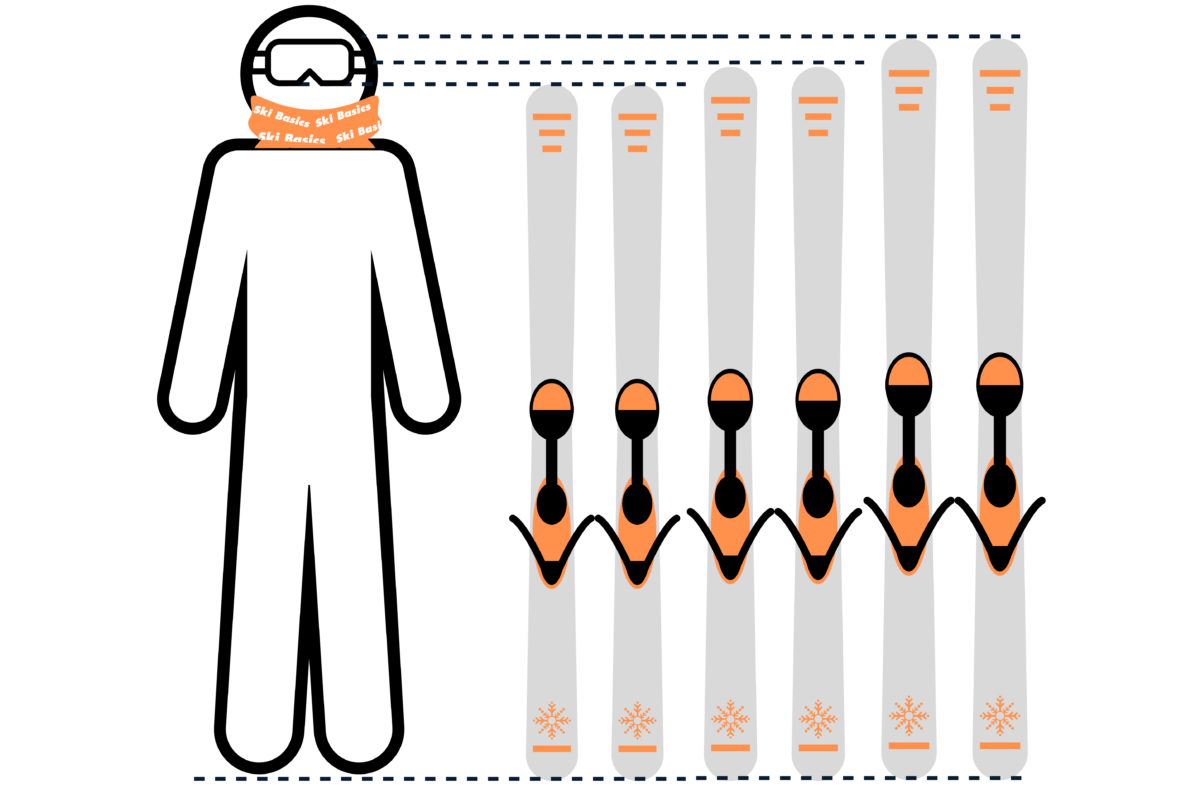
Ski Length Table for All Mountain Skis

Once you reach expert level, you’re good to have your skis even longer and the same as your total height.
Additional consideration to ski length
In the recommended ski size range, there are various factors influencing the choice between a shorter or longer ski. Opting for a shorter ski makes turning easier but sacrifices some stability when compared to a longer one. Specifically, carving skis with a narrower waist width and smaller turn radius can be used at shorter lengths compared to all-mountain or freeride skis with wider waist widths and larger turn radii. Additionally, rockered skis, which have a curved shape, offer improved manoeuvrability between turns and are suited for slightly longer lengths.
Here’s a few points to help pick the best length for you…
Considerations for shorter skis
If you plan to carve your way around the mountains then you should opt for a shorter ski that aids you in making these turns.
Equally if you like to make a lot of short, sharp turns and don’t often like to ski fast, shorter skis could be the best fit for you.
Considerations for longer skis
If you like to ski fast and aggressively, like to ski off piste, plan to use twin tips for hitting up kickers and/or prefer skis that have a lot of rocker, longer skis are likely to be the best option for you.
Step 4. Narrow or Wide – How To Consider The Best Ski Width?
Ski width is the measurement of the ski width at the waist (middle) of the ski. This is also often the slimmest point.
Wider skis provide better buoyancy in deeper, powdery snow. Whereas narrow skis provide quicker edge to edge turns.
This being said, nowadays we are seeing increasingly wider skis being used for all mountain skiing. Advancing technology is improving wider skis ability to have the manoeuvrability of narrower skis whilst maintaining the float of a wider ski.
When looking at ski widths, you will see this explained with a three number measurement which refers to the tip/waist/tail.
Some websites like Absolute Snow, will have the option to filter skis by waist width but as a guide, you can generally expect them to be around the ranges below:
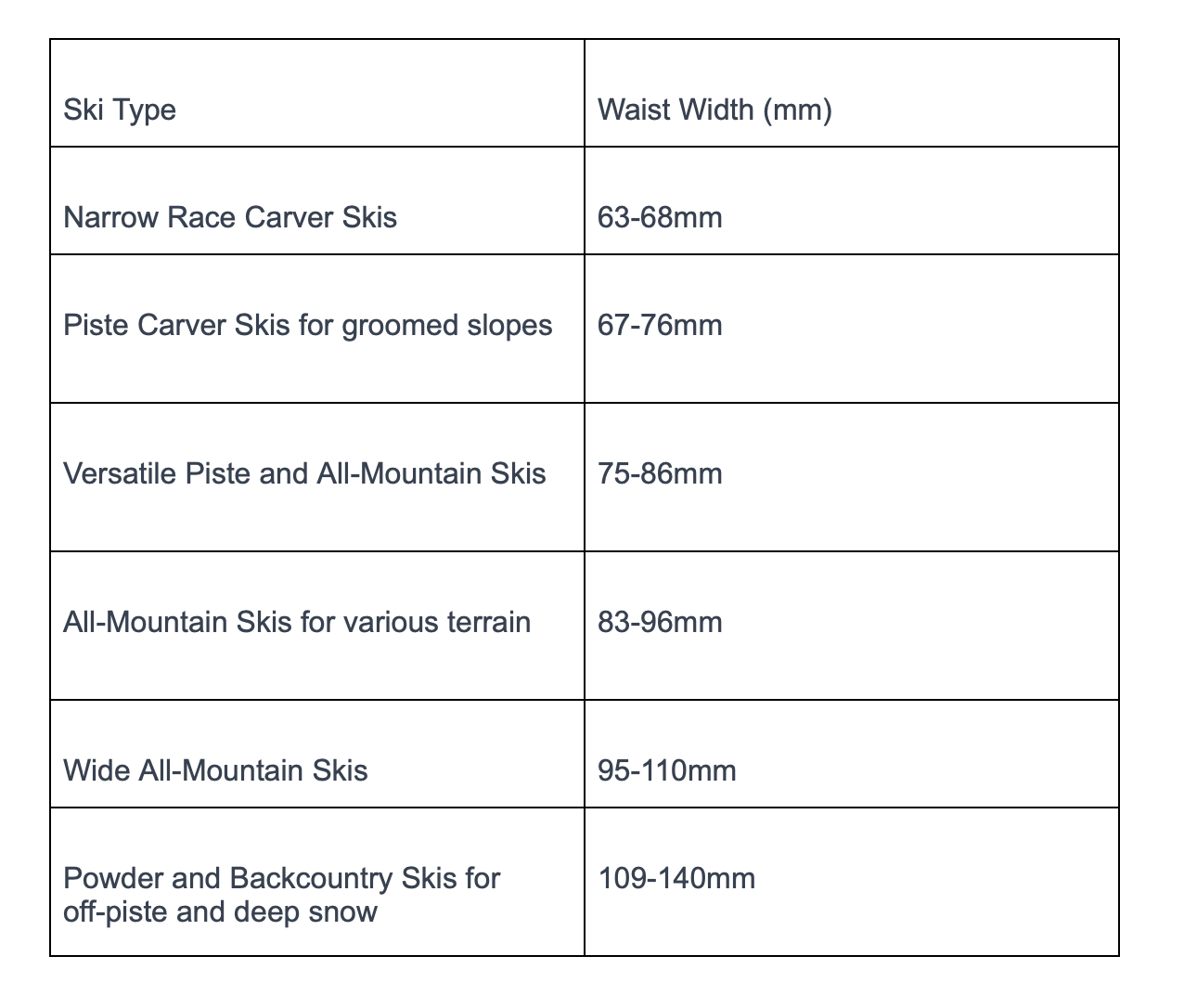
Step 5. Understanding Ski Shape and Its Importance For Performance
To find the perfect ski for you when buying your first skis, you must first carefully consider the ski shape. In the past all you needed to consider when buying skis was the length. Now that technology has graced us with rocker and sidecut options (and the rest!), there is so much more to think about. There are almost an infinite amount of shape combinations you can choose when buying skis, such as a rockered tip, camber underfoot and a flat tail, double cambers, a rocker at either end… the possibilities are endless! The shape of your ski helps to improve your skiing based on the type of terrain and style you have found yourself skiing in so it’s important to understand the basics:
- ‘Rocker’ means the curved rise of the tail on your ski which helps to lift the ski out of powder. There are three main types of ski rocker profile: camber, rocker, and flat. Many modern shapes use a combination of more than one of these. The more rocker a ski has, the easier the ski is to turn and the more lift it gives. If you have less rocker, it can be a little trickier to turn in soft snow.
- ‘Sidecut’ is the term which refers to the inner curve of the ski which gives it its hourglass shape and is often expressed as a radius (in metres). Sidecut is a crucial thing to consider when buying your first skis as the shapelier a ski is (ie- the deeper the sidecut), the tighter you will be able to turn. Skis with really deep sidecuts will be awesome for slalom but will perform less stably at speed. A less deep sidecut will allow skis to make long fast arcs and will help skis to float as it keeps them closer to the surface.
- ‘Camber’ is the traditional profile for skis and snowboards and is the slight upward curve in the middle of the ski you’ll see when the ski lays flat. There are many different types of camber profiles for different styles of skiing; a camber offers great precision on groomed terrain with harder snow, and you’ll find that racers and skilled park riders often prefer camber in their skis as it gives a better ‘pop’. As you unweight your skis at the tail end of a turn, cambered skis rebound to their natural profile, propelling you into your next turn – If you’ll be using your skis at a resort, you’ll probably want a ski with camber for optimum grip and stability on hard snow.
- ‘Flat’ means flat, simple as that! If you choose a ski which is flat when laid on a table, you won’t see any air between the table and the ski. Flat is more commonly a shape for snowboards than skis, as it helps with easy transitions and better manoeuvrability than camber.

Step 6. Stiff or Soft Skis? What You Need to Know About Flex and Rigidity
The rigidity of the skis you choose will be dictated by your ability and your expectations.The higher your standard, the more rigid your skis will need to be to make them more sensitive and “alive”. If you are a beginner, go for flexible, light skis.
Choosing the Right Skis for Women
Women’s specific skis cater to the unique needs of female skiers. They’re like that perfect pair of shoes custom-made for your feet, but for the slopes! The skis are built to account for the fact that women often have a smaller build, so they’ve got softer flex patterns and slimmer waist widths to match your style.
Women’s centre of gravity is often also lower so female skis are built for the differences in how weight is shifted across the skis.
If you’re looking for a freestyle ski you should look out for those that are softer with a bigger flex and if you’re planning on sticking to those perfectly pruned pistes, go for something slightly stiffer and longer.
It’s worth noting that most women will be perfectly fine skiing on unisex skis but skis designed specifically for women will often bring that little extra something when it comes to design and control.
Advanced Ski Buying Considerations
Ski Turning Radius
When it comes to skis, the term radius refers to a ski’s sidecut radius, which is essentially your skis natural turn size. Think of it as one part of the ski’s edge being a piece of a circular puzzle, and the sidecut radius is like the radius of that circle. You will see these measurements in metres.
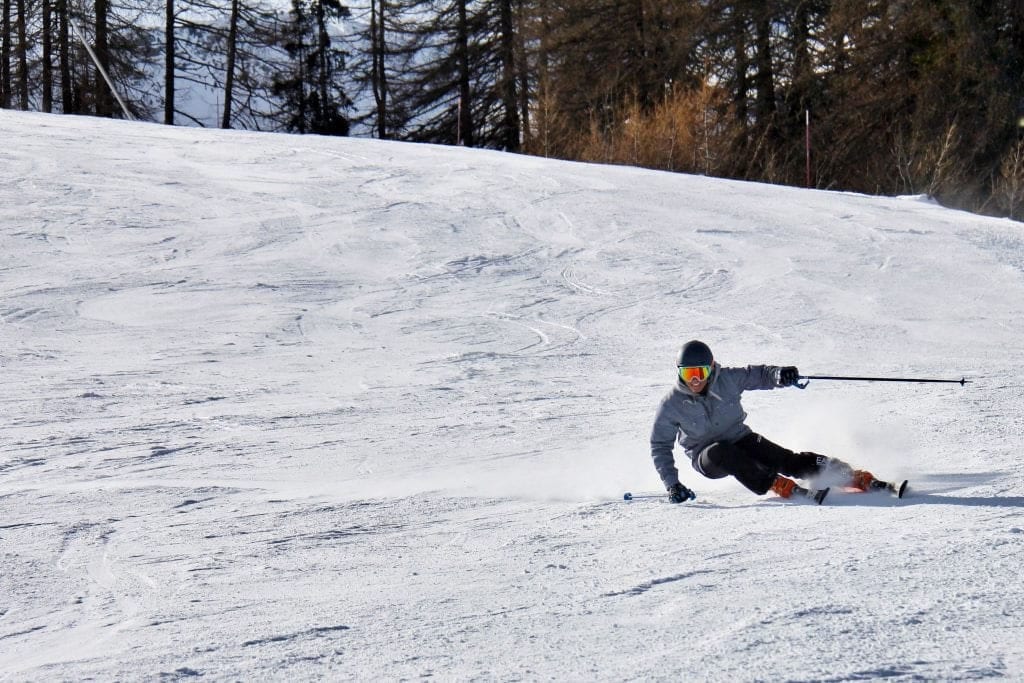
Skis designed for perfectly groomed slopes typically have a short radius, typically between 10 to 15 metres. This shorter radius allows these skis to make quick turns and smoothly carve down the slopes.
For skiing in off-piste conditions, skis with a radius of 20 metres or more come into play. The longer radius provides added stability, making them well-suited for challenging conditions away from the groomed slopes.
And then you have the all-mountain and freeride skis, which generally fall somewhere in between the two. They’re designed to handle a variety of terrain, both on and off-piste, offering versatility for different skiing experiences.
4 Ski Base Construction
The base construction of skis comes under four constructions. You may sometimes see these referred to differently when looking at different ski brands. However, the construction will always fall into one of the four below categories:
1. Extruded Base
One sheet of p-tex plastic is used in the creation of an extruded base, which is then passed through a mould shaped to match your ski’s profile. This process creates a unified plastic sheet that is then affixed to your ski’s core. Maintenance of extruded bases is straightforward, making them a preferred choice for entry-level or intermediate skis and those designed for freestyle use.
2. Extruded Hybrid
Sometimes also known as Sintruded, Extrintered, or Impact bases, these all follow the same construction principles as extruded bases. However, the p-tex plastic used is often of higher quality or incorporates additional chemicals to enhance its hardness and durability.
3. Sintered
Towards the higher quality end of ski base constructions, sintered bases are crafted from polythene granules that are ground into a powder, then heated and compressed onto the ski’s core. Sintered bases bring greater durability, superior speed, and an increased ability to hold wax, resulting in a faster and more enjoyable skiing experience. Although they come at a higher cost, the investment is well worth it!
4. Sintered Hybrid
Sintered hybrid bases are the most premium option available when it comes to ski base construction. The production process mirrors that of sintered bases, but polythene granules are blended with materials such as carbon or other friction-reducing substances, creating bases that offer lightning-fast speed and exceptional durability. The ideal option for the speed demons among us!
Ski Bindings
When choosing your first pair of skis, it’s also necessary to consider bindings. Whether you prefer free skiing or powder, the type of bindings you choose will be largely dictated by the type of skiing you will be doing and the type of skier you are.
Track-Mounted Bindings
These are bindings which are mounted onto a track on the ski which allows them to be perfectly positioned for the size of your ski boot. Benefits of mounted bindings include the fact that the track plate allows the ski to naturally flex so more evenly distributes the force you apply when turning. If you are looking to buy new ski boots, track-mounted bindings are probably your best bet as they allow flexibility if you want to share/sell on your skis at a later date.
Drill-Mounted Bindings
As the name suggests, drill-mounted bindings are drilled and glued onto the ski making them a permanent fixture. This is done professionally in a ski shop or you can get them mounted in resort if you need to also. Some people think that you get a better control with drill-mounted bindings as your foot is closer to the ski itself, and the ski with drill-mounted bindings is lighter as you don’t have the extra weight of the track system weighing it down as you do with track-mounted bindings.
Top Ski Brands We’d Recommend
When it comes to choosing the right brand of skis, you certainly won’t be short of choices. Many brands will offer a range of skis for different styles and at a range of price points. To help you explore which might be the right ones for you, we’ve summarised a few options below…
Rossignol:
French born Rossignol has a long history within the ski industry, having been a leader of innovation since they were founded in 1907. Rossignol’s current ski lineup includes everything from piste-friendly models that are staples in rental shops to capable off-piste and freeride designs.
When it comes to buying a pair of Rossignol skis, you can expect to pay around £250 to £600 for entry-level models and can go up to £800 or more for premium and advanced skis.
K2 Sports:
K2 is an American brand well known for its wide range of ski products, with an emphasis on technology and design. K2 caters for a whole range of different skiing styles, including all-mountain and freestyle.
Prices across their ski ranges generally start at around £250 to £600 for entry-level models and can go up to £900 or more for premium and advanced skis.
Blizzard:
Austrian brand Blizzard is known for its high-performance skis across a range of categories, including all-mountain and freeride. They’re proud to keep a keen focus on precision and quality.
Blizzard ski prices can start from £300 up to £700 for entry-level models, ranging up to to £900 or more for advanced and specialty skis.
Nordica:
Italian born Nordica offers a large range of ski equipment, again with a focus on innovation and performance with skis designed for various skiing styles.
Their skis typically start at around £300 and can go up to £800 or more for premium and expert-level models.
Head:
Head is an Austrian brand that produces high-quality skis with a strong emphasis on technology and design for a broad selection of the different skiing styles.
Head ski prices generally start at around £300 for entry-level models and can reach £900 or more for advanced and race-oriented skis.
Salomon:
Salomon is a popular French brand offering a diverse range of skis suitable for different skiing styles, including all-mountain, freestyle, and backcountry.
Salomon ski prices can range from £250 for entry-level models to £800 or more for advanced and specialist skis.
DPS Skis:
DPS Skis is a manufacturer known for its high-performance and often handcrafted skis, which are popular among off-piste and powder enthusiasts.
DPS ski prices start at around £600 and can go well above £1,000, especially for their premium and specialised models.
Black Crows:
Black Crows is another much loved but newer French brand who burst onto the scene after being founded in 2006 and hold a reputation for producing skis designed for off-piste and freeride skiing, with an emphasis on performance and aesthetics.
Black Crows ski prices typically range from £450 to £900 for various models, with premium or specialised skis exceeding £1,000.
Conclusion
No matter your skill level or the terrain you prefer, this six-step guide equips you to confidently select the perfect pair of skis. By considering essential factors like what type of skiing you’ll be doing, your skiing ability, and height and weight which can determine your ski length.
If you still need to book your next ski trip, why not take a look at our chalets and remaining availability here or if you have a question, simply get in touch and a member of the team would be pleased to hear from you.
How long should your skis be for your height?
Ski length depends on your height, weight, skill level, and the type of skiing you plan to do. As a general rule, skis should reach somewhere between your chin and the top of your head. Beginners often start with shorter skis (around chin height) for easier control, while advanced skiers may prefer longer skis for stability and speed.
Do different skis make a difference?
Yes, different skis are designed for different conditions, styles, and skill levels. For example, all-mountain skis work well on most terrain, while powder skis are wider and better for deep snow. Racing skis are narrow and fast, while freestyle skis are more flexible and easier to maneuver. Choosing the right type of ski can improve your performance and make skiing more enjoyable.
Should beginners wear narrow or wide skis?
Beginners usually do better with slightly narrower skis. Narrower skis are easier to turn and control, especially on groomed slopes. Very wide skis, designed for powder, can feel bulky and harder to manage for those just starting out. General, all mountain skis are usually best.
